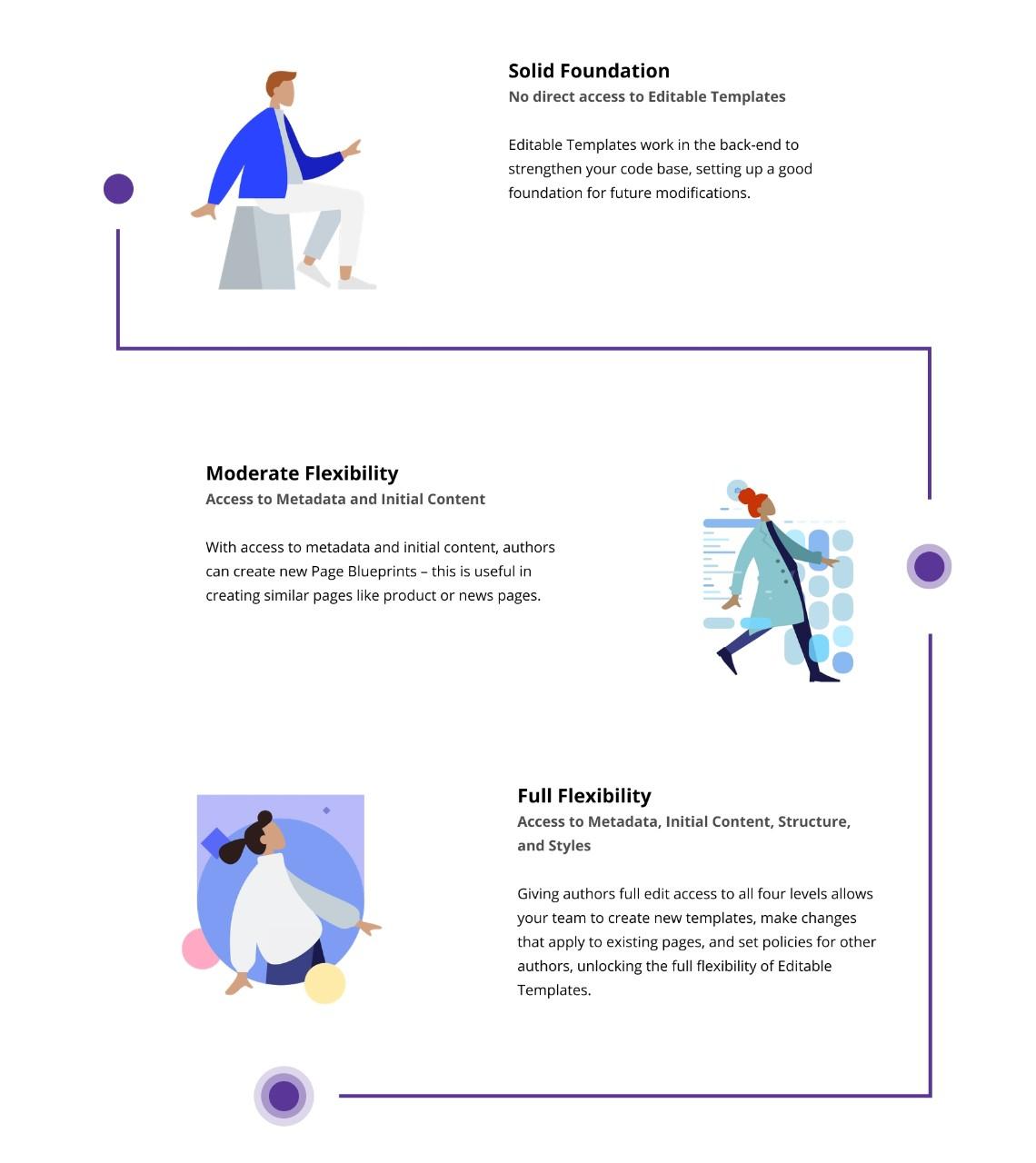How to build websites fearlessly with AEM editable templates

Editable site templates have dramatically changed the amount of flexibility afforded to organizations to manage their web experiences. With the power of this Adobe Experience Manager (AEM) tool comes complexity, but when applied with the right knowledge and expertise, it offers a world of potential to your business.
Let’s begin with an overview of the key features of AEM Editable Templates:
- Components act as building blocks to reuse and customize different templates with minimal coding. This rapidly speeds up development time and makes your website uniform throughout while ensuring flexibility.
- Structure defines fixed elements of the pages based on this template. Authors can use the components to add headers, footers, or any other feature on every page. This includes grids, where authors add the actual content.
- Initial Content defines elements added to every page on creation that can be changed and removed by authors. This may include aspects like stage components that appear on all pages, but where the actual images differ.
- Content Policies allow teams to configure how certain pages can be edited, which is extremely helpful in keeping your page structures consistent even when there are many users and editors involved. Components and templates can be subject to content policies.
- Style Systems make components even more flexible, allowing you to apply different styles and formatting options editors can select with one click directly in the interface for page editing. This supports the frontend technology.
But how do these features come together in practice for your business?
Editable templates allow your content authors to define and change page templates without the help of development or IT, rapidly speeding up the process of creating modular, future-proof websites. Below, we explore how our experts apply editable templates in three different scenarios, granting teams just the right amount of flexibility for their needs.
Keep in mind that there are 4 levels of adaptation available with editable templates:
- Initial Content
- Policies
- Structure
- Styles

1. Strengthened code base without direct access to Editable Templates
Even without authors directly modifying any part of Editable Templates, they are used in the back end. This way, you still benefit from an improved code base – leveraging multiple templates using the same page component and using policies, which offer more flexibility. If your website doesn’t require too much manual configuration, this is a good option for teams looking to strengthen their code base and put a good foundation in place for future modifications.
2. Moderate flexibility with Page Blueprints
In this scenario, authors can create new templates called Page Blueprints by changing only the metadata and initial content. Page Blueprints don’t affect the functionality of a template but create new pages that already contain example content. This helps your team create multiple similar pages (i.e. product info pages, news pages), which retain the same page structure and potentially similar content. Additional features like how-to text and defining in which sections of your site these pre-filled pages can be created also support your team using Page Blueprints.
3. Full access & flexibility with Editable Templates
When authors have access to all four adaptation levels of Editable Templates, they can create and change many template variations. They can even set available editing options for regular authors using policies or change how existing pages look if they modify the structure. This scenario is recommended to advanced teams who want to unlock full flexibility with Editable Templates and can make sweeping changes across their website but are also able to manage the inherent complexity.
At Netcentric, we bring a team of experts in UX, marketing ops, and tech solutions to help your business get the most out of powerful tools like AEM editable templates. Contact us today to learn how we can help you achieve your goals.